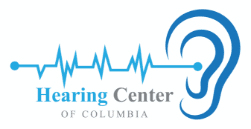Chemical Exposure Could Be Damaging to Your Hearing
According to the CDC, hearing loss is the third most common chronic physical health condition among adults. Many people think of loud noise as the cause, but chemical exposure can also lead to hearing loss. National Institute for Occupational Safety and Health Dr. John Howard notes that chemicals called ototoxicants or ototoxic chemicals can damage different parts of the ear. They can also make ears more sensitive to the harmful effects of noise.
Chemical Concerns
NIOSH recently updated its Noise and Occupational Hearing Loss resources to include more information about these chemicals, the industries known to use them, and ways to reduce risk and exposure.
Some examples of these chemicals include:
- Solvents (toluene, styrene, xylene, ethylbenzene, and trichloroethylene)
- Metals and compounds (e.g., mercury compounds, lead, and organic tin compounds)
- Asphyxiants (e.g., carbon monoxide, hydrogen cyanide and its salts, and tobacco smoke)
- Nitriles (e.g., 3-butenenitrile, cis-2-pentenenitrile, and acrylonitrile)
- Pharmaceuticals (e.g., certain antineoplastic drugs
- Pesticides
Workers can be exposed to these chemicals in different ways, including breathing them in, consuming contaminated food or drinks, and absorbing them through the skin by touching them. Once exposed, these chemicals can travel through the bloodstream and injure the inner ear and damage the nerves that transmit information to the brain. Some of the industries more likely to use these chemicals include manufacturing, construction, agriculture, utilities, and public safety.
Exposure Risk
Like with noise, hearing loss caused by ototoxic chemicals varies based on how often you are exposed, how much you are exposed to, and for how long. Exposure to other workplace hazards, and other individual factors (such as age and smoking status) also influence the effect of chemicals that damage hearing. “Occupational hearing loss is permanent but preventable,” said Howard. “Understanding how some chemicals can cause hearing loss is a great first step in protecting your hearing.”
Exposure limits for many chemicals were set without specifically considering ototoxicity, according to NIOSH. That means there may be a hearing risk at exposure levels below existing guidance, especially when combined with noise exposures.
Taking Precautions
NIOSH urges workers to consider taking precautions to protect themselves from ototoxic chemicals:
- Read and follow all requirements on each chemical’s Toxicological Profile.
- Wear personal protective equipment, such as gloves resistant to the chemical(s) of concern, long sleeves, and eye protection, as needed. Wear hearing protection to prevent the effects of noise.
- Consider all the risk factors and how to control them if you may be exposed to possible hazards.
Employers and health and safety professionals can prevent ototoxic chemical exposure in the workplace through the hierarchy of controls:
- Avoid using ototoxic chemicals in the workplace or replace with less toxic chemicals.
- Improve ventilation.
- Train workers to safely handle chemicals.
- Supply personal protective equipment to workers.
- Train workers to use PPE correctly.
Article originally appeared on CBIA
